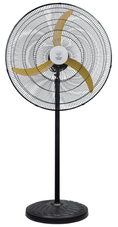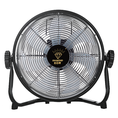Cookware concerns may be one issue stopping some Americans from adopting induction cooking. Because induction relies on electromagnetism, only pots with magnetic bottoms — steel and iron — can transfer heat. But that doesn’t mean you need to buy all-new cookware. If a magnet sticks to the bottom, your pots and pans will work with induction. (If you do need some new cookware, the winners of our best stainless steel skillets roundup are all induction-friendly.)
"There's a lot of misunderstanding about special pans," Bristow says. "Yeah, the bases have to be magnetic, but there's a lot of cookware out there now that supplies that demand. And the fact is, they're not specific to induction, so you can use those pans on other fuels."
Price has been another big stumbling block. While induction ranges still claim a smaller portion of the overall market, they are becoming more affordable. That alone may convince homeowners who have been sitting on the fence. Built-in cooktops and freestanding induction ranges—which include electric ovens—can be purchased for under $1,000.
A variety of manufacturers have introduced induction ranges, signifying their confidence in adoption rates in the U.S. Many have added appealing features like Auto-Sizing Pan Detection, where the range automatically detects the pan’s footprint, and heats only the area making contact.

Credit: Samsung
You have more control over temperature on an induction cooktop than you have with a gas cooktop, but there is a learning curve. Samsung induction cooktops show a blue "virtual flame", which can help a new user visualize the amount of heat going to the pan.
Recognizing the consumer’s reliance on visual cues, Samsung offers LED lighting on its induction ranges, a feature that creates a bright blue "virtual flame."
Since the science proves that induction cooking is faster, safer, and more efficient than gas or electric, why the hesitation? As McKechnie pointed out, microwave ovens suffered from a similarly slow adoption rate through the 1970s, for precisely the same reason: People just didn't understand the science behind microwave cooking, or how it could benefit them.
Ultimately, it was the introduction of PR-friendly cooking demos, TV shows, and microwave dealerships that helped the technology take off. Induction cooking may require a similar strategy.
If that's the case, McKechnie thinks a bit of strategic rebranding might go a long way. "The word 'induction' doesn't help," he explained. "That's the scientific name—it's induction field technology—but a lot of people can't really relate to it. The nomenclature could probably use some help."

















